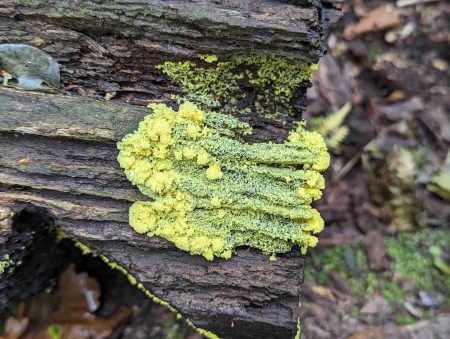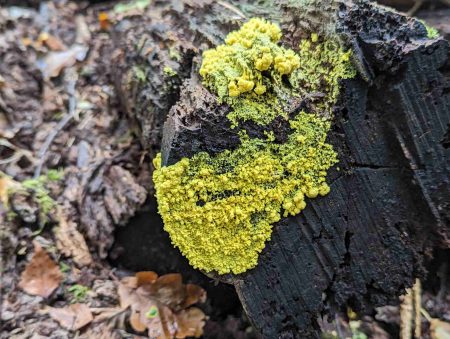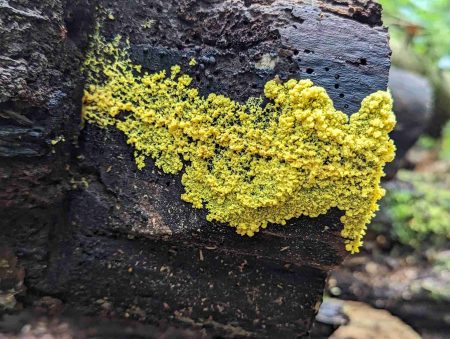Click on an image to enlarge
LOCATION:
Trail End Area
DATE FOUND:
Day 1 – 12 August 2023
DAY ONE
On a mossy stump and a piece of rotting wood, I spotted both a plasmodial form and an aethalium in close proximity, probably of the same species.
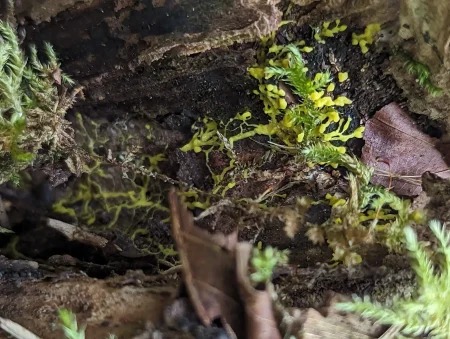
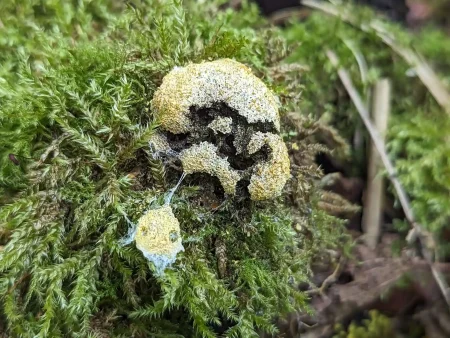
I found another aethalium on a small log surrounded by a web-like yellow hypothallus (1).
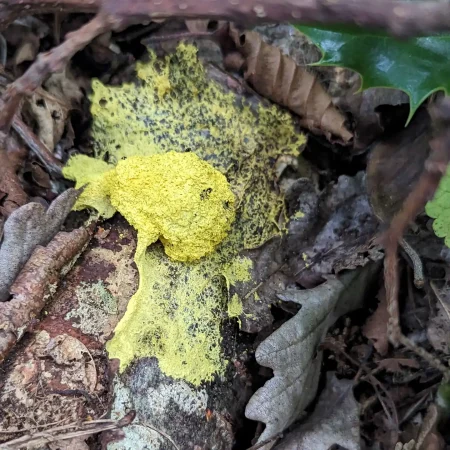
DAY TWO:
I found a few different Fuligo septica — one group in aethalial from, another just forming aethalia, and the other in spore mass form — all on rotting wood.
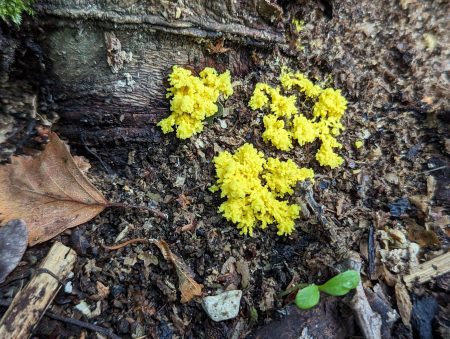
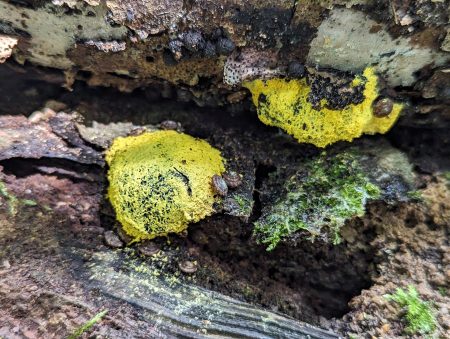
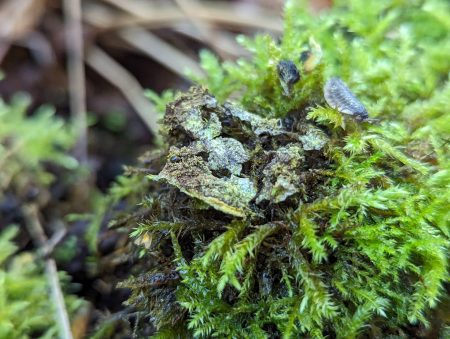
DAY THREE:
By Day 3, this slimemould from Day 1 had disintegrated (1):
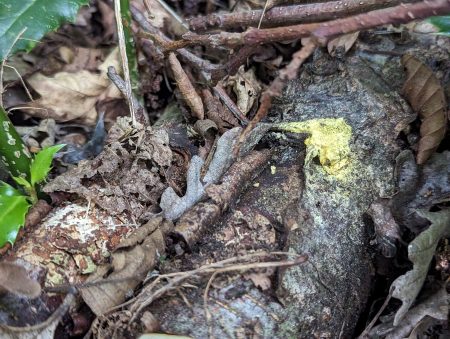
I also spotted these lemon-chrome plasmodia on a rotting log, spreading outwards.
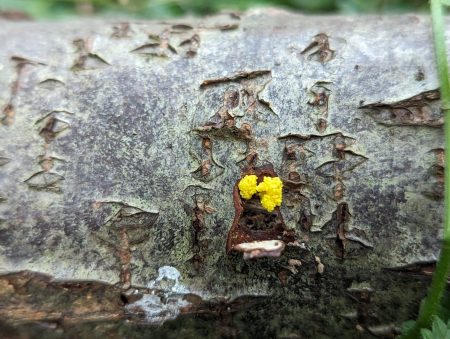
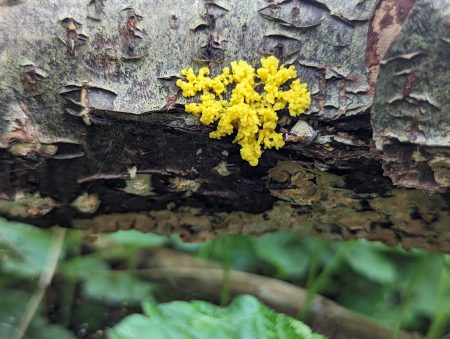
I found many F. septica aethalia on a rotting log pile, which I would continue to see colonising the whole log pile later (2).
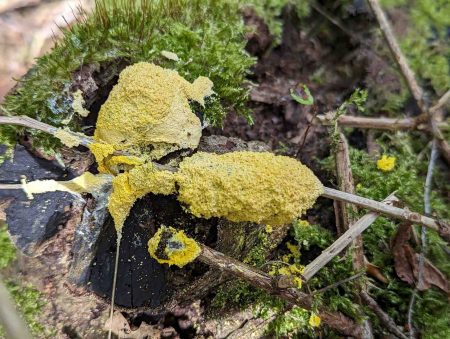
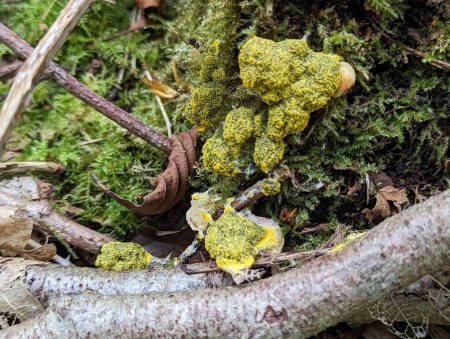
DAY FOUR:
I found this sprawling lemon-yellow plasmodium on a rotting log.
It had many distinctive vein structures creeping over the rotting wood.
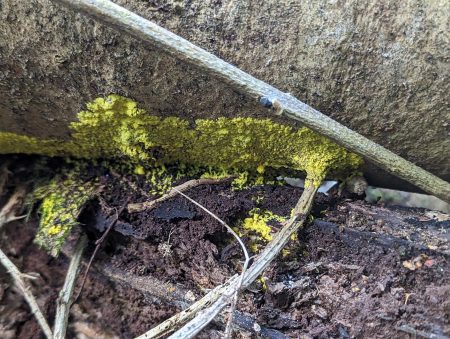
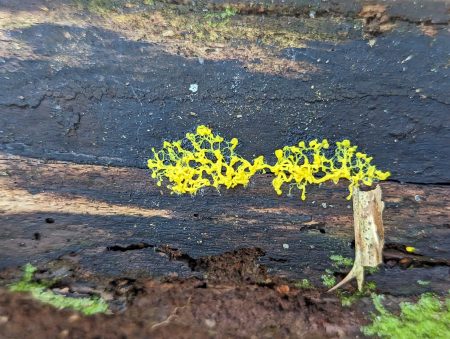

(2) The largest group had moved — the old area of colonisation was white while the newer area was lemon-yellow.
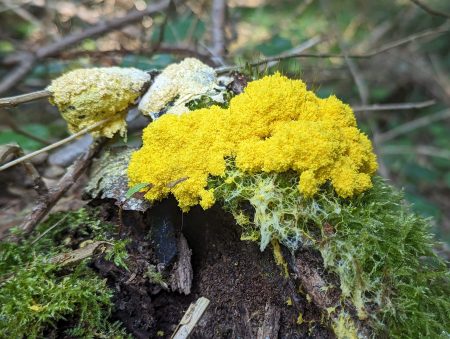
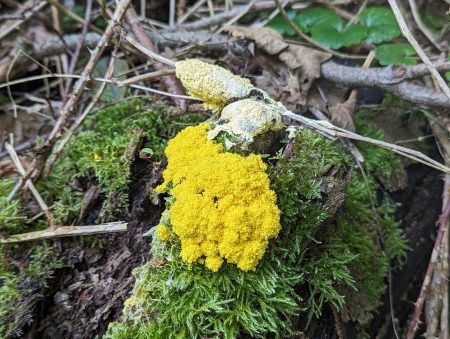
DAY FIVE:
On a rotting fallen trunk, I spotted this spread-out, flat yellow aethalium.
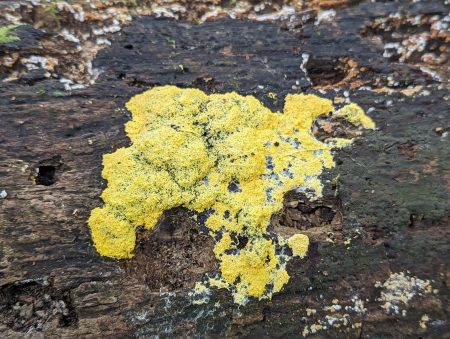
I also found this plasmodial-stage slime mould covering a rotting branch, with distinct areas forming pre-aethalial clumps (3).
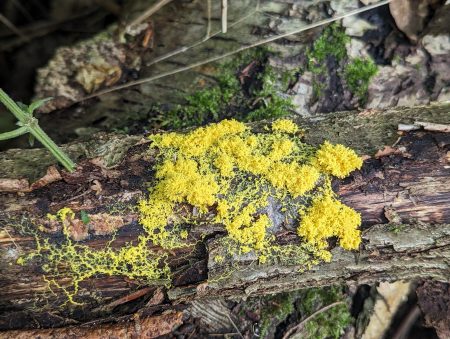
This pre-aethalial slimemould grew along a piece of rotting birch wood (4).
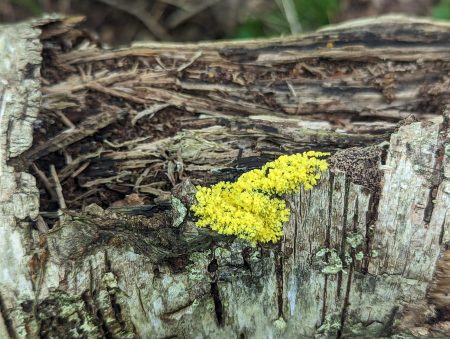
This plasmodial slime-mould was forming into pre-aethalial clumps, and had covered an entire log (5).
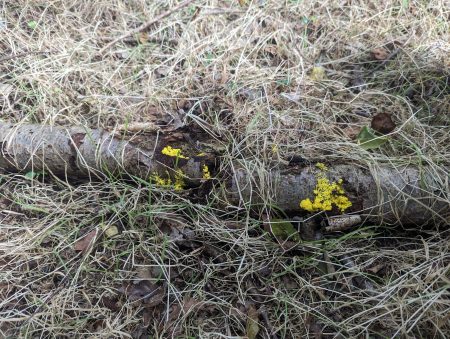
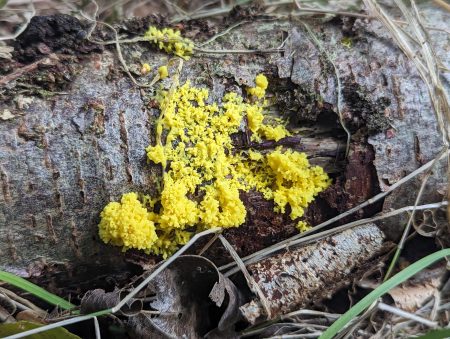
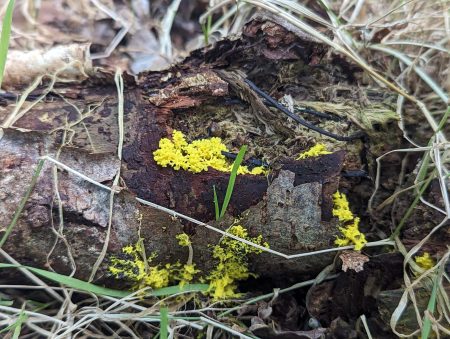
(2) On Day 5, all of the slime moulds here had changed – some were now white, others disintegrating into a brown spore mass.

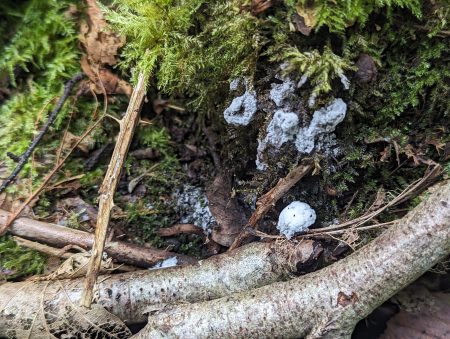
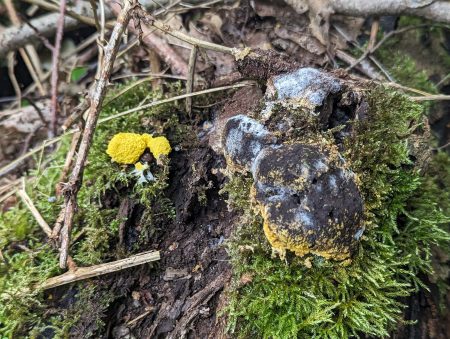
DAY SIX:
(3) By Day 6 this had formed aethalia entirely bleached entirely of colour.
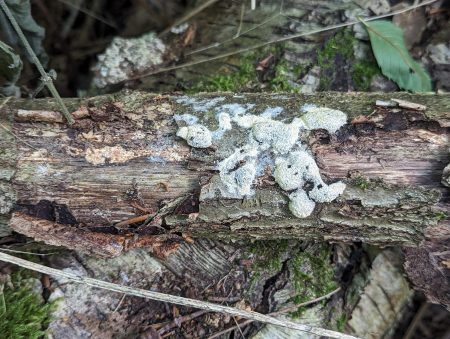
(4) By Day 6, this had grown considerably larger and formed an aethalium.
White remnants and parts forming the hypothallus covered the surrounding area.
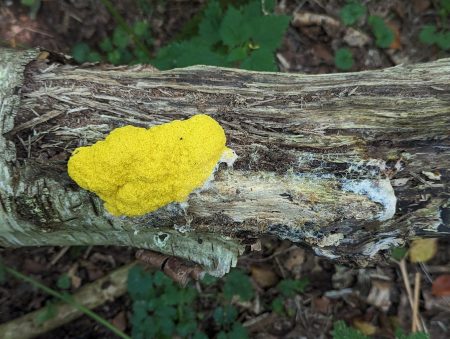
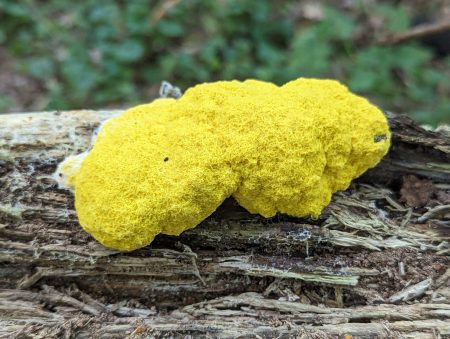
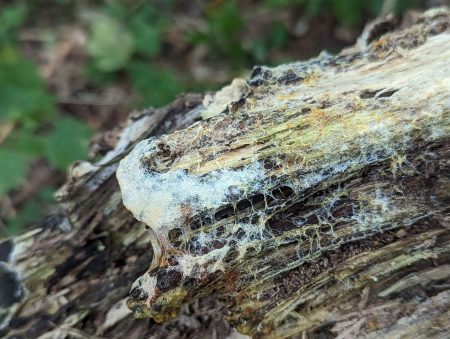
(5) By Day 6, this had faded to white, with only hints of yellow round the edges.
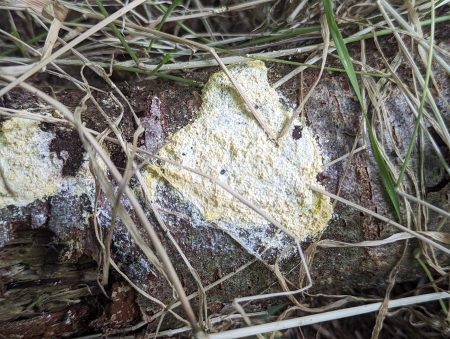
DAY SEVEN:
(2) One of the larger F. septica on this log pile had made a come-back in a few, vibrant yellow, conjoined aethalia.
Where the aethalia previously was, there was a mass of greyish spores.

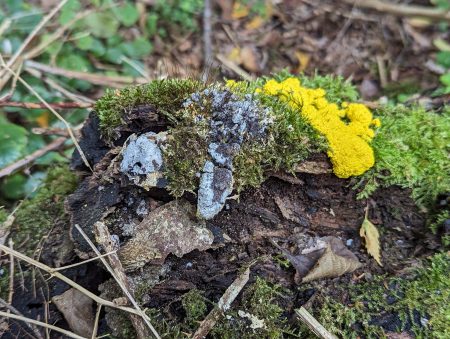
I did not see them again after this.
(4) This had diminished to dark brown spores, covered by a paled remain of the aethalium.
Around it could be seen white tendrils of where the slime mould had once moved.
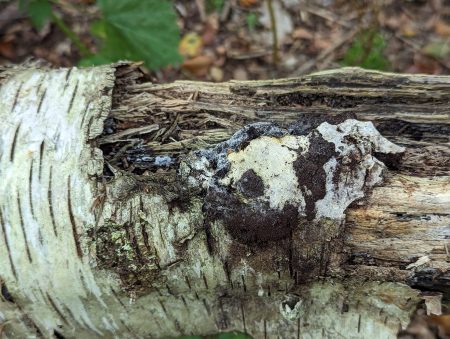
DAY NINE:
On a rotting log pile, this line of slime mould plasmodium wrapped round the edge of a log and back along its side (6).
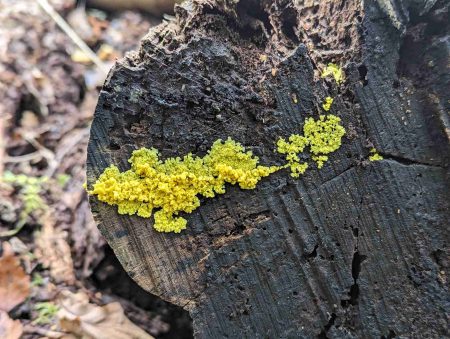
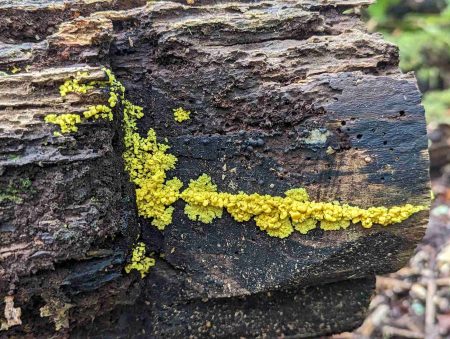
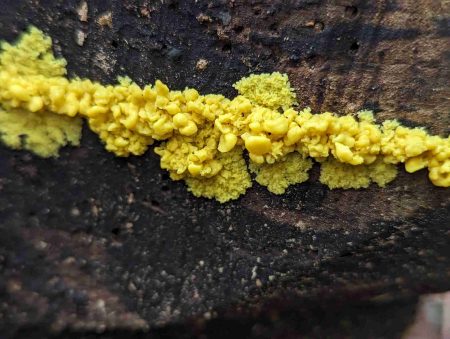
(6) The next day, it had grown even larger and covered most of that end of the log.
